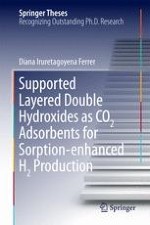2016 | OriginalPaper | Buchkapitel
8. Sorption-Enhanced Methanol-to-Shift for H2 Production: Thermodynamics and Catalyst Selection
verfasst von : Diana Iruretagoyena Ferrer
Erschienen in: Supported Layered Double Hydroxides as CO2 Adsorbents for Sorption-enhanced H2 Production
Aktivieren Sie unsere intelligente Suche, um passende Fachinhalte oder Patente zu finden.
Wählen Sie Textabschnitte aus um mit Künstlicher Intelligenz passenden Patente zu finden. powered by
Markieren Sie Textabschnitte, um KI-gestützt weitere passende Inhalte zu finden. powered by
